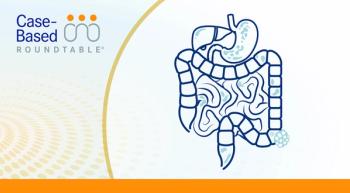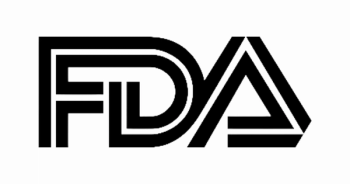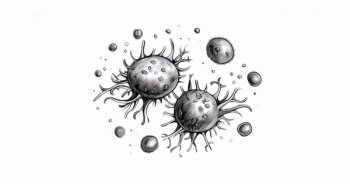
Higher Tivozanib Dose Improves Antitumor Activity in Kidney Cancer
Tivozanib at 1.34 mg showed greater antitumor activity than 0.89 mg, with similar hypertension rates, in kidney cancer.
Tivozanib (Fotivda) at the FDA-approved 1.34 mg starting dose demonstrated greater antitumor activity than the reduced 0.89 mg dose, with comparable hypertension rates, according to an integrated efficacy and safety exposure-response (ER) analysis in renal cell carcinoma (RCC). The analysis included data from the phase 3 TIVO-1 (NCT01030783), TiNivo-2 (NCT04987203), and TIVO-3 (NCT02627963) studies, presented at the 2025 ASCO Genitourinary Cancer Symposium.
“[There was a] strong exposure response relationship between cycle 2 tivozanib serum Cavg and progression-free survival [PFS],” Bradley McGregor, MD, lead study author, wrote in a poster presentation of the data at the 2025 Genitourinary Cancers Symposium. McGregor is director of Clinical Research for the Lank Center of Genitourinary Oncology, a senior physician as well as Marra Lochiatto Investigator at Dana-Farber Cancer Institute, and an assistant professor of medicine at Harvard Medical School, all in Boston, Massachusetts.
When PFS was stratified by tivozanib cycle 2 Cavg quartile, data showed that those who received a higher concentration of tivozanib had the longest median PFS of patients examined. Patients with an exposure ranging from 62.0 to 177 ng/mL had the longest median PFS at 9.7 months and the median PFS was as follows for those with an exposure ranging from 47.9 to 62.0 ng/mL (median PFS, 9.1 months), 38.4 to 47.9 ng/mL (median PFS, 7.3 months), and 13.9 to 38.4 ng/mL (median PFS, 5.6 months) (P = .00016).
“A correlation between tivozanib Cavg and change in tumor size from baseline was also observed,” McGregor wrote. “Patients in the TiNivo-2 combination therapy arm who received 0.89 mg [of] tivozanib are mostly clustered in the lowest Cavg quartile. As Cavg quartiles of tivozanib increase, patients’ tumor size decreases, indicating [a] higher tivozanib [dose] results in an increased tumor response.”
The tivozanib Cavg quartile correlations with changes in tumor size and best overall response (BOR) in the tumor size model revealed the following changes in median BOR for those with an exposure ranging from: 62.0 to 177 ng/mL (median BOR, –23.8; [95% CI, –14.1 to –33.5]), 47.9 to 62.0 ng/mL (median BOR, –17.3; [95% CI, –8.27 to –26.4]), 38.4 to 47.9 ng/mL (median BOR, –11.7; [95% CI, –2.05 to –21.3]), and 13.9 to 38.4 ng/mL (median BOR, –7.02; [95% CI, 1.03 to –16]). The respective groups included 183, 185, 173, and 176 patients.
In TiNivo-2, the lower dose of tivozanib was given in combination with nivolumab (Opdivo), and modeling data also showed that nivolumab did not affect the pharmacokinetics of tivozanib. Additionally, the incidence of any grade or grade 3 hypertension was not significantly different between patients who received the 2 doses of tivozanib.
Data Leading to This ER Analysis
Previously, tivozanib monotherapy was approved by the FDA in March 2021 for the treatment of adult patients with relapsed or refractory advanced RCC following 2 or more prior systemic therapies based on data from TIVO-3.2 Data from the trial showed that the VEGFR TKI elicited a median overall survival (OS) of 16.4 months (95% CI, 13.4-21.9) in patients (n = 175) vs 19.2 months (95% CI, 14.9-24.2) in patients who received sorafenib (Nexavar; n = 175; HR, 0.97; 95% CI, 0.75-1.24).3 The median PFS was 5.6 months (95% CI, 4.8-7.3) vs 3.9 months (95% CI, 3.7-5.6), respectively (HR, 0.73; 95% CI, 0.56-0.95; P = .016). The recommended dose of tivozanib per the prescribing information and FDA approval is 1.34 mg administered once daily with or without food for 21 consecutive days every 28 days until disease progression or unacceptable toxicity.2,3
Tivozanib was given at a lower dose of 0.89 mg for 21 days in a 28-day cycle in TiNivo-2 when it was combined with nivolumab, assuming a risk of hypertension. However, the lower-dose regimen did not improve outcomes when compared with tivozanib monotherapy given at the approved 1.34-mg monotherapy dose. A worsened trend for PFS was observed as patients treated with the doublet (n = 171) experienced a median PFS of 5.7 months (95% CI, 4.0-7.4) vs 7.4 months (95% CI, 5.6-9.2) with the monotherapy (n = 172; HR, 1.10; 95% CI, 0.84-1.43; P = .49).4
Further Examining Methods to Conduct the Exploratory Analysis and More
To conduct the analysis presented, investigators used a population pharmacokinetic model to augment existing ER models based on the TiNivo-2 and TIVO-3 trials.1 Additionally, data from TiNivo-2 were integrated to update the pharmacokinetic and ER models for PFS, tumor size, and hypertension, as well as to simulate the ER-based risk/benefit profile of tivozanib. Tumor size was measured by the sum of longest diameters longitudinal model, hypertension by logistic regression, and PFS by Cox proportional hazard model.
The objective of the analysis was to better understand the relationship between tivozanib exposure with PFS, tumor size, and hypertension. Baseline patient characteristics between the 3 studies examined were generally well balanced; all patients had an ECOG performance status of 0 to 1 and more than 70% of patients were male. The median age of patients ranged from 59 years to 64 years.
“The results from the TiNivo-2 data set further confirmed that rechallenge with immunotherapy does not add benefit and optimal dosing of tivozanib provided the highest clinical benefit following progression on immunotherapy…ER models show that 1.34 mg [of tivozanib] provides greater antitumor activity than 0.89 mg. The hypertension incidence seems to be comparable, [and] these ER data suggest that a dose of 1.34 mg [of] tivozanib provides a greater decrease in tumor size and maybe more tolerable,” McGregor wrote in conclusion.
Disclosures: McGregor has a consulting or advisory role with Arcus Biosciences, Astellas Pharma, Bristol-Myers Squibb, Daiichi Sankyo/Astra Zeneca, Eisai, Exelixis, Genmab, Gilead Sciences, Loxo/Lilly, Pfizer, and Seattle Genetics/Astellas. He has also received institutional research funding from Bristol-Myers Squibb, Calithera Biosciences, Exelixis, Pfizer/EMD Serono, and Seattle Genetics/Astellas.








































